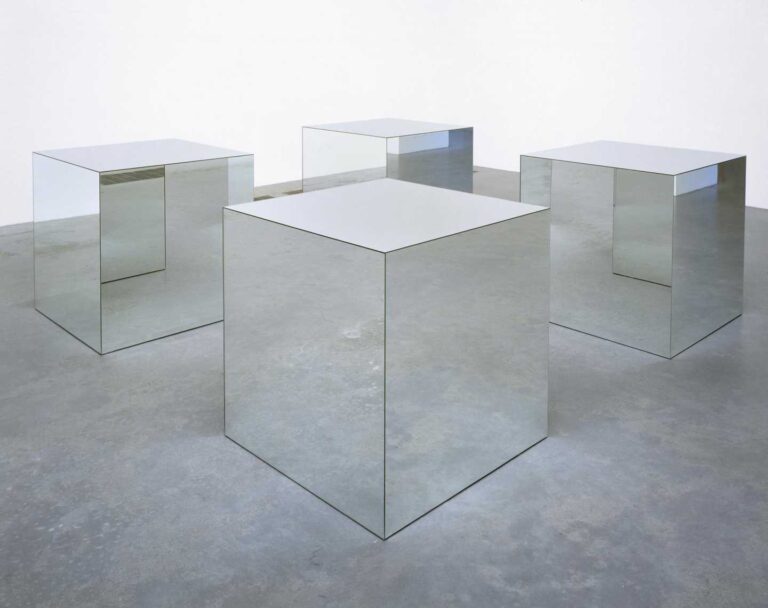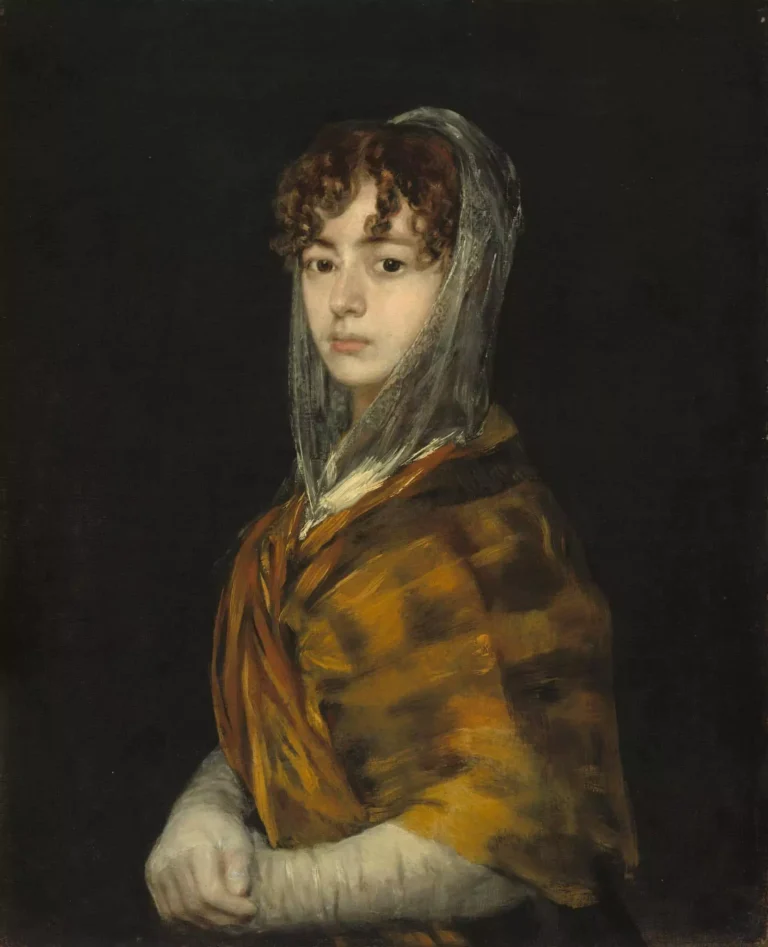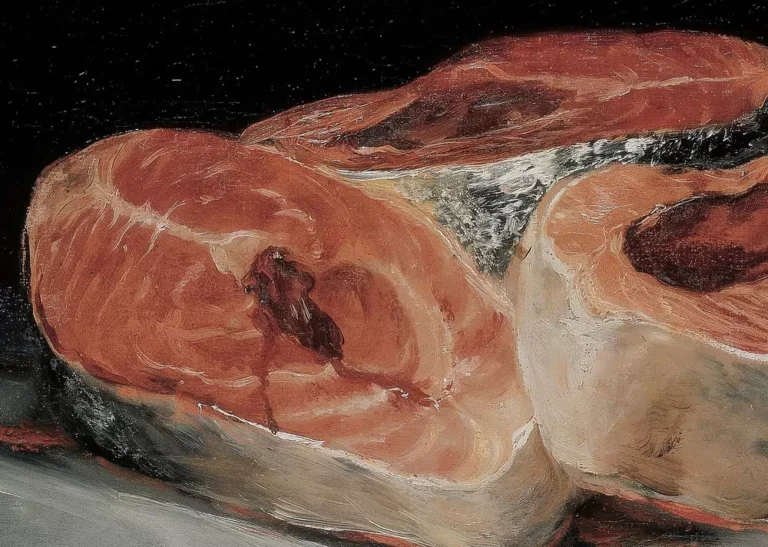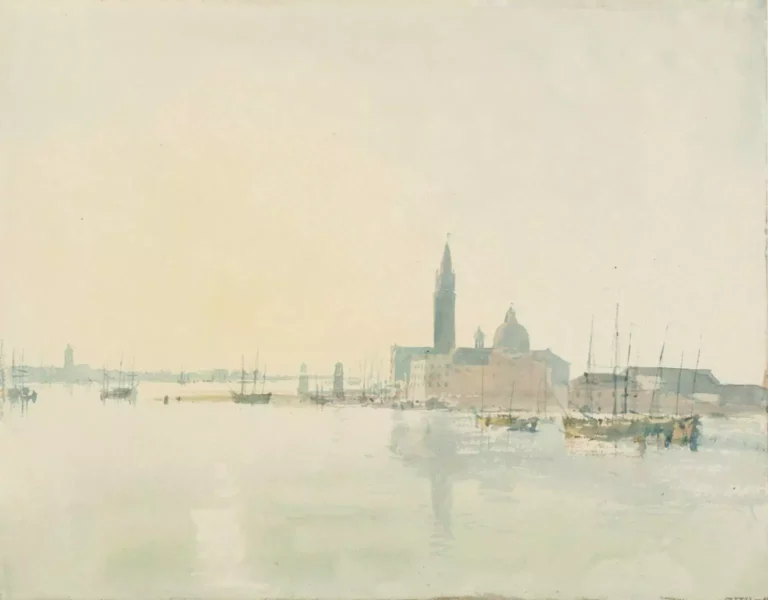Looking for a muse? Check no further. Discover the Best of Art, Culture, History & Beyond!
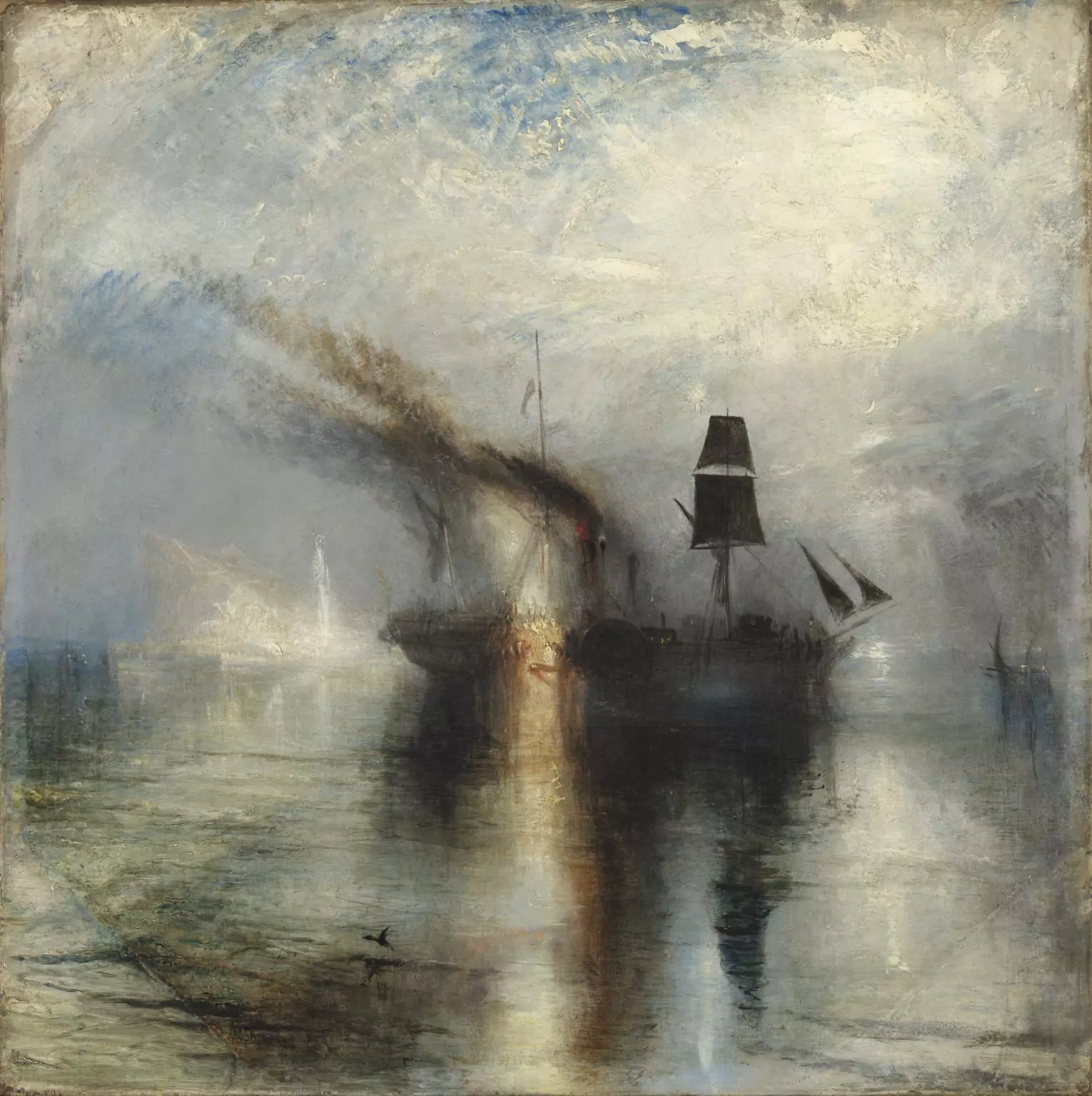
| Artist | Joseph Mallord William Turner |
|---|---|
| Title | Peace – Burial at Sea |
| Year | exhibited 1842 |
| Medium | oil on canvas |
| Dimensions | 87 x 86,7 cm |
| Location | Tate Britain, London |
A painting that feels like silence made visible. A pale sky meets calm water. A dark ship holds a quiet grief. Turner’s Peace – Burial at Sea captures a moment that’s almost too still to bear.
In 1842, England was fixated on Turner. The Royal Academy’s summer show buzzed with excitement. His two paintings, Peace and its companion War, drew the most attention. One showed tenderness. The other, fury. And Turner smiled into both.
This painting is a tribute to his friend David Wilkie. Wilkie was a celebrated Scottish painter. He died suddenly in 1841 on his way back from the Holy Land. The ship could not dock near Gibraltar. Authorities feared disease. So Wilkie was buried at sea. Turner carried that loss inside him. And he grieved on canvas.
Look closely. The burial is almost invisible. A black sail shadows the deck. A flashlight of torchlight slashes the dark water. The body, wrapped and lowered, drifts into the sea’s embrace. A solitary seabird lifts off, as if carrying a soul skyward.
That seabird is not decoration. It is the soul’s flight. Tiny, fragile, beautiful.
Turner waited a year before painting this. He showed it in London beside War—The Exile and the Rock Limpet. Together they uttered a contrast—funeral peace and exile misery. Critics sneered at the minimal finish. They saw blotches rather than meaning. Now we see the hush.
The cool palette is deliberate. Whites, blues, greys, with saturated black sails. The calmness of grief. Turner reportedly said he wished he could make the sails even blacker. Black that held grief deeper than paint.
This painting wasn’t Turner chasing storms. It’s about stillness, memory, farewell. He turns grief into silence that talks.
Getting into Turner’s world means understanding the Romantic era. He wasn’t about neat realism. He chased feeling, atmosphere, light. He painted outdoors. He battled light, wind, rain. To match what he felt inside. He saw nature as both sublime and sorrowful.
Peace – Burial at Sea carries that weight. It holds loss tenderly. It honors friendship. It mourns what remains lost.
The title is not accidental. Peace isn’t absence of war. It is silent dignity, the hush of finality, the farewell with love.
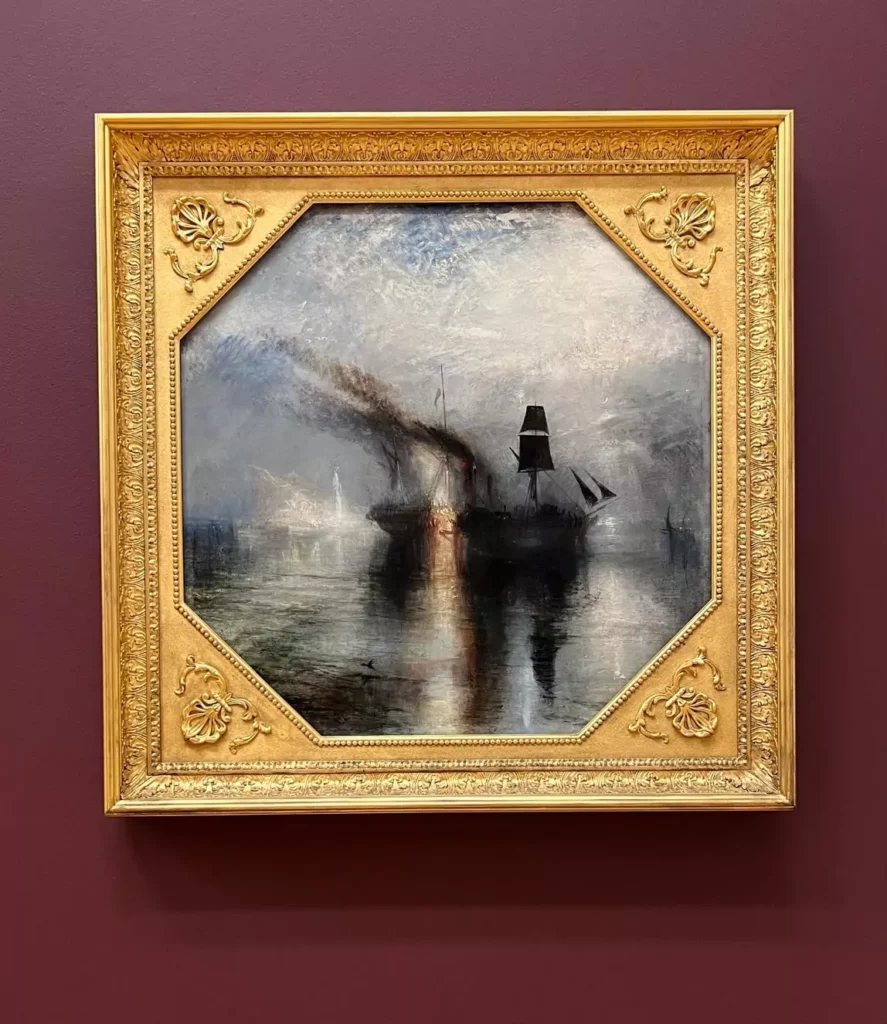
Think about the pairing with War. One explodes in hot sunset. The other cools your heart in lowered cuff of sea. Together they say something more than each alone could.
David Wilkie had no grand funeral. Turner gave him one through brushstrokes and moods. That is friendship immortalized.
This painting was part of Turner’s final gift to the nation. After his death in 1851, Britain inherited a trove of his oils. Now Peace – Burial at Sea lives quietly in Tate Britain. A hush in the gallery’s flow.
Visitors pause. Not because it’s famous. But because Turner asked them to feel, not look. You sense absence. You feel water’s hush. You catch delicate sorrow in the light.
Fun fact: a British post-rock band named themselves Peace Burial at Sea after this painting. It speaks through music too. And once, in Australia, the National Gallery recreated this scene in Sydney Harbour—with an actual ship. Real torchlight. Real waves. Turner would have liked that live echo.
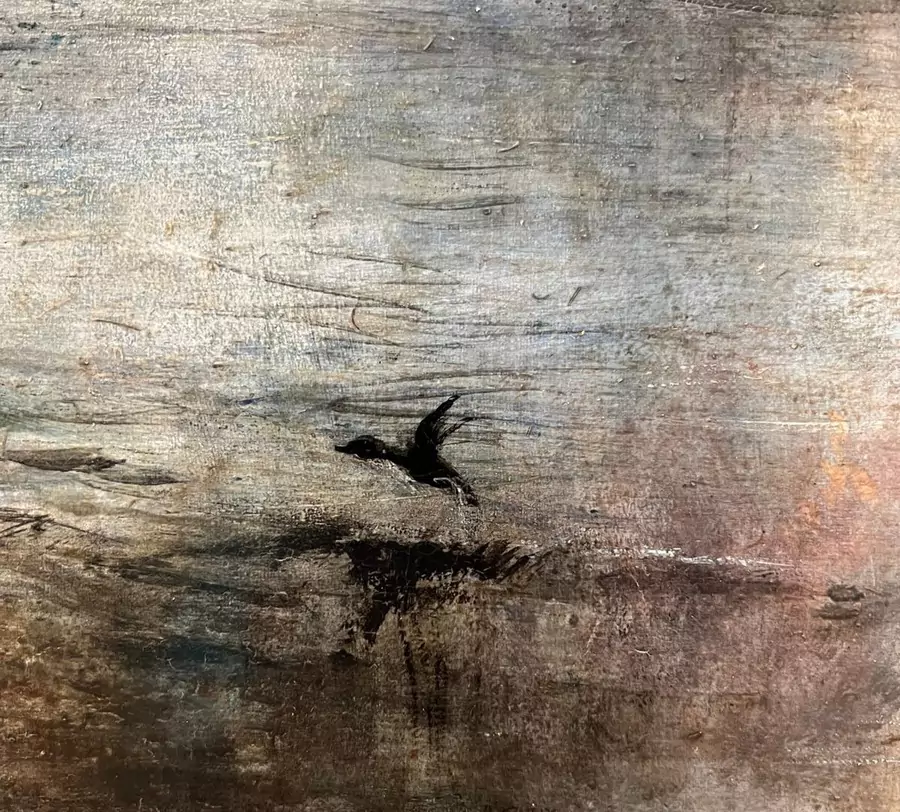
If death must happen at sea, Turner shows us how it might find beauty in grief. Peace in the watery farewell.
So next time you see this painting, don’t just see a ship. Feel a friend being let go. Feel the breaks in the sky and water. And know Turner stood there, feeling too.

This article is published on ArtAddict Galleria, where we explore the intersections of art, history, and culture. Stay tuned for more insights and discoveries!
